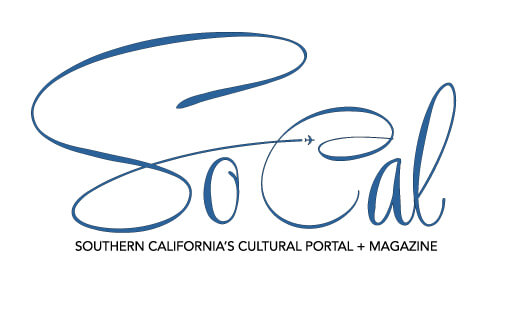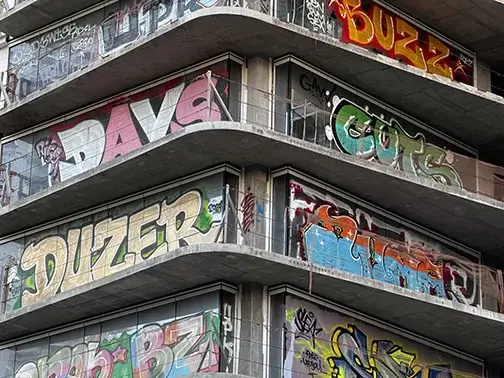
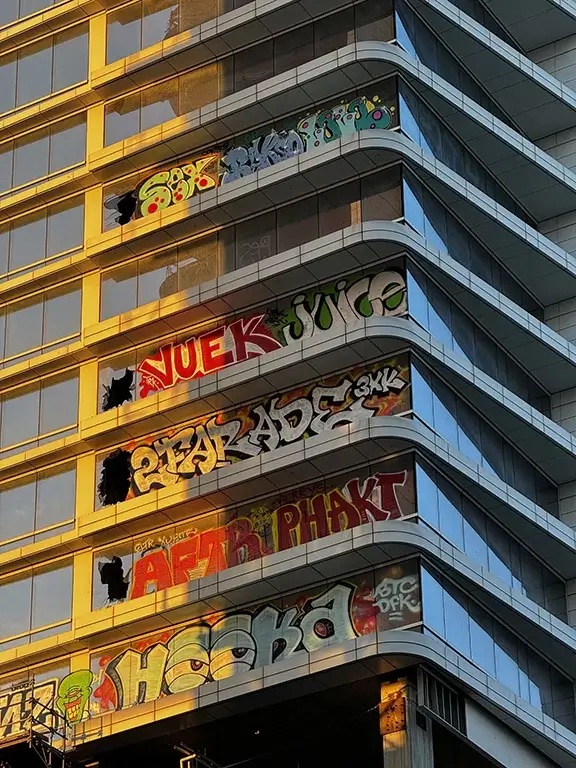
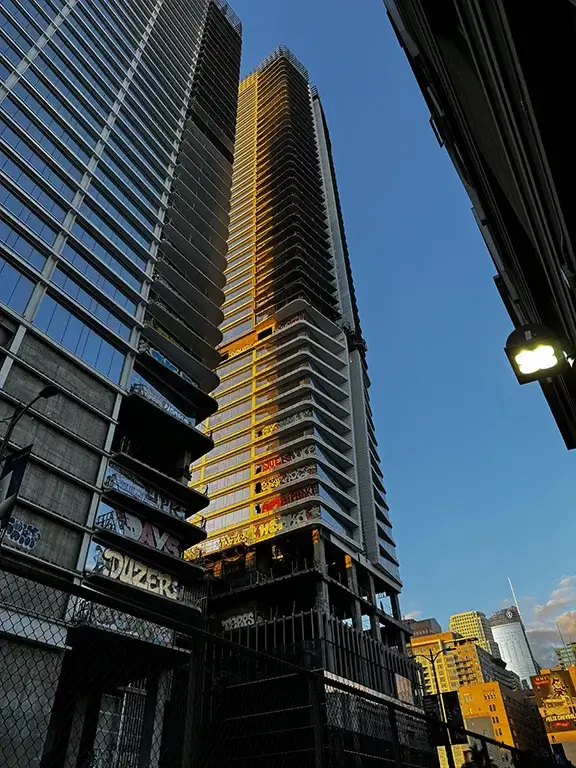
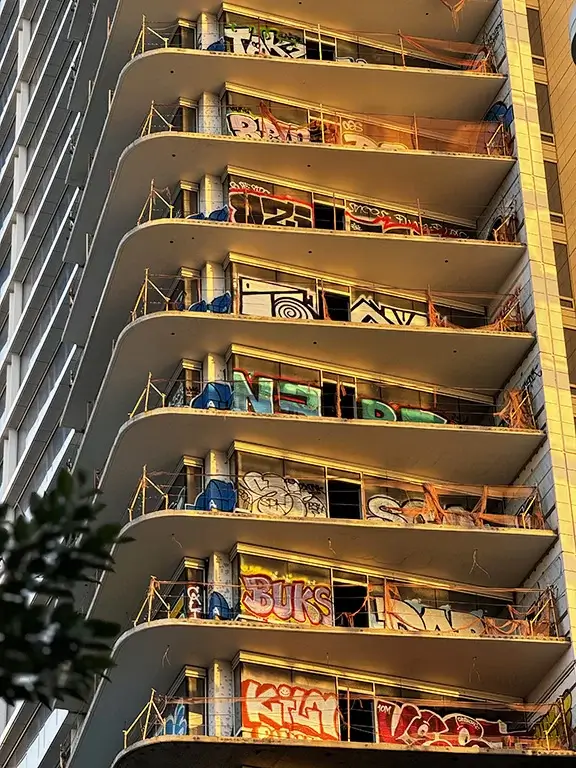
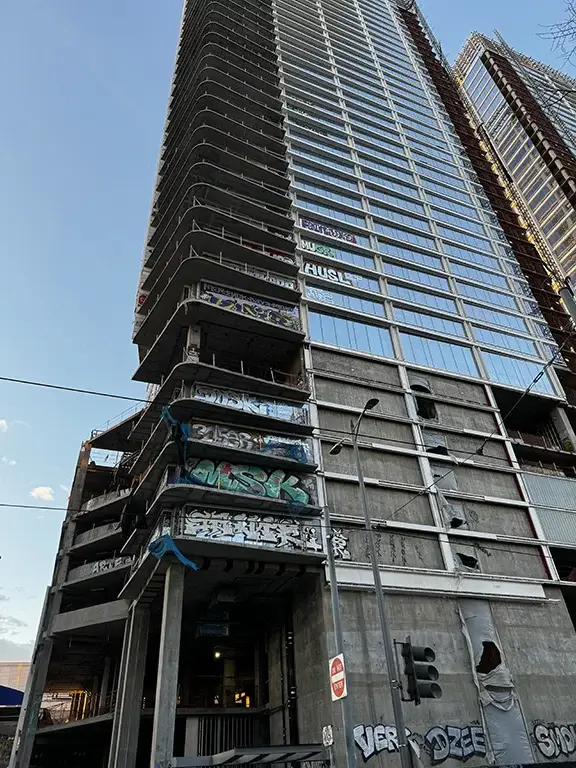
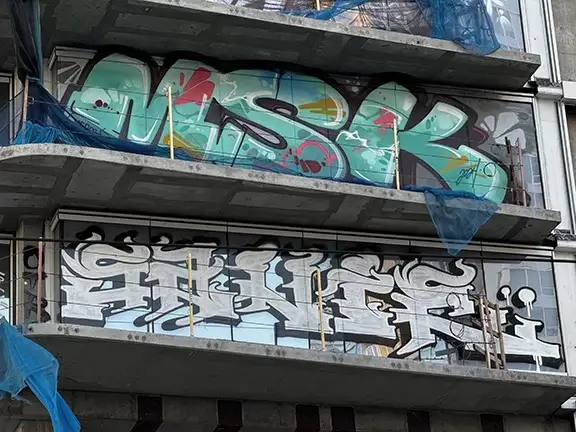
In 2011, MOCA presented a show called “Art in the Streets”, it was the first major U.S. museum survey of graffiti and street art. It was controversial and provoked an academic debate about the nature of graffiti. Today, one need only look up—downtown, South Park, for the moment, home to nearly 27 floors of typographical messages commonly known as graffiti. Derived from the Italian word graffio(“scratch”), graffiti (“incised inscriptions,” plural but often used as singular) has a long history. The graffiti seen here may be short lived as the the Los Angeles City Council.The buildings are part of the Oceanwide Plaza which was meant to be a $1 billion real estate project in downtown L.A., but it’s been empty since 2019. According to the Los Angeles Times’ Summer Lin and Robert Gauthier, the plan was to build three neighboring towers that would serve as luxury condominiums and apartments alongside hotel and retail space. However, construction stopped when the Beijing-based developer backing the project ran out of funds.The abandoned buildings have been an eyesore for locals, and currently the cause of great debate about just what graffiti is. The building looks like an electrical panel with dull cement gray exteriors that have sat for five years, and at some point provided an opportunity for local graffiti artists to decorate the building. Currently, the Los Angeles City Council has voted to invoke the owners to clean up the “mess” of they will and send a bill.
Graffiti can be found throughout the city, from the streets of downtown Los Angeles to the neighborhoods of East LA. Here are some key points about graffiti in Los Angeles:
- Historical Roots: Graffiti has a long history in Los Angeles, dating back to the 1960s and 1970s when it emerged as a form of expression among marginalized communities. The city played a significant role in the development of graffiti as an art form.
- Legal and Illegal Graffiti: While some graffiti is illegal and considered vandalism, there are designated areas and public spaces where street art is legal and even encouraged. The city has a complex relationship with graffiti, acknowledging its artistic value in certain contexts while also enforcing laws against illegal tagging.
- Venice Beach Walls: Venice Beach is known for its legal graffiti walls, where artists can freely express themselves without fear of legal repercussions. These walls attract both local and international graffiti artists, contributing to the vibrant street art culture of the city.
- Murals and Street Art Festivals: Los Angeles hosts various street art festivals and mural projects that bring together artists to create large-scale public artworks. The city has numerous murals that showcase a wide range of styles and themes, often reflecting the cultural diversity of the area.
- Melrose Avenue: Melrose Avenue in West Hollywood is famous for its street art scene. The walls of buildings along this iconic street often feature colorful murals and graffiti pieces, creating an outdoor gallery that reflects the trendy and artistic atmosphere of the neighborhood.
- Downtown Arts District: The Arts District in downtown Los Angeles is another hotspot for street art and graffiti. Former industrial buildings and warehouses in this area have been transformed into galleries and studios, attracting artists who contribute to the urban art landscape.
- Political and Social Commentary: Graffiti in Los Angeles often serves as a platform for political and social commentary. Artists use their work to address issues such as gentrification, inequality, and cultural identity, providing a visual voice for marginalized communities.
It’s important to note that opinions on graffiti vary, and while some view it as a form of artistic expression, others see it as a form of vandalism. The city’s approach to graffiti continues to evolve, with efforts to balance artistic freedom with the need to maintain public spaces.
